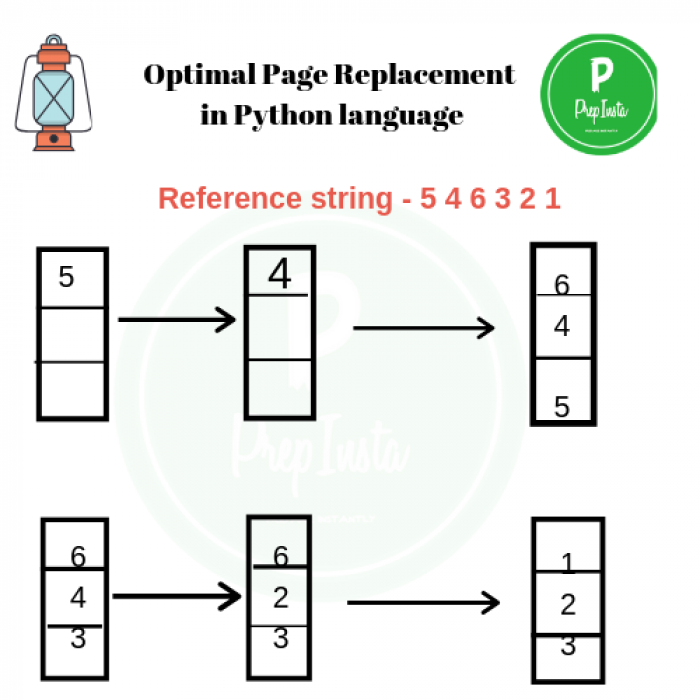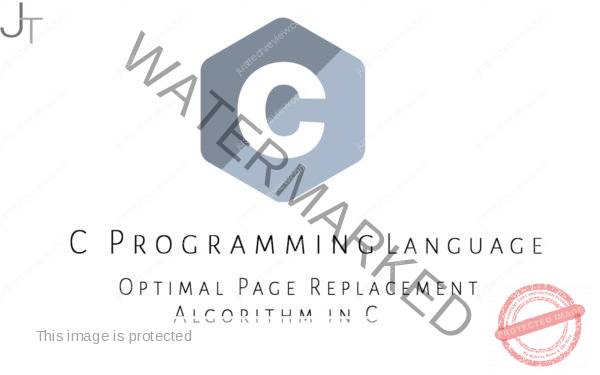

- Optimal page replacement algorithm in java code#
- Optimal page replacement algorithm in java zip#
- Optimal page replacement algorithm in java simulator#
Compare with the results in the sample output and thebook.Fewer page fault than different pages (remember this is to usedemand paging).No page faults – initial fault at least.More page faults than items – not clearing a counter?.Remember to place theapproximate number of hours you spent on this assignment in yourobservations file. Place your observations (how do the different methods comparefor the page-replacement strings) in another attached text or wordfile and make certain that your name and the assignment number areat the top of your observations file.
Optimal page replacement algorithm in java zip#
Place the following in the Dropbox for assignment #5: a zip filewith a copy of your source code, output file from your run, andyour observations file.ĭo not use screen shots for your data file. Your name and the assignment number must appear at the top youroutput file from your program. Do not make the programinteractive, it should run through the three strings with no humaninteraction. Remember to remove or turn off all of any debug output beforeyou generate the output to send to me. It does not have the outputfor the optimal case.
Optimal page replacement algorithm in java code#
Note that I have placed a sample output in the assignment filethat you can use to partially check your code and see the requiredoutput format a little more clearly. Where # is the number of page faults, x is the number of pageframes, and nnnnnn is the page-reference string. Your output should be in the following format (repeated seventimes, one for each number of page frames, and the set of sevenrepeated three times, one for each of the three page-referencestrings):įor x page frames, and using string page reference stringnnnnnnnnnnnnnn: Make certain to have your name, date, assignment number, and abrief description of the program at the top of your mainmethod. Have separate clearly marked classes, functions, or methods forLRU, FIFO, and Optimal replacement algorithms. The sample output has the correct solutions for LRU and FIFO butnothing for Optimal. Rememberto count the first time a page comes in, as this is a page fault indemand paging. Record the number of page faults with each of thesedifferent page frames numbers and each of the differentalgorithms. Implement thereplacement algorithms so that the number of page frames goes from1 to 7 and you must compute the page fault for each of these framenumbers. However it is used as a reference for other page replacement algorithms. Note that optimal page replacement algorithm is not practical as we cannot predict future. We can use an unorderedset in place of vector so that search operation can be done in O (1) time. Apply therandom page-reference string to each algorithm, and record thenumber of page faults incurred by each algorithm. The above implementation can optimized using hashing. 229-234.Write a Java program that implements the FIFO, LRU, and Optimalpage replacement algorithms presented in chapter 8 of your text.First generate a random page-reference string (this should be 20entries long) where page numbers range from 0 to 9. on Hardware/software codesign and system synthesis. Demand Paging for One-NAND#8482 Flash eXecute-in-place.

Memory Resource Man-agement in VMware ESX Server. Page Replacement Using Marginal Loss Functions. on Measurement and Modeling of Computer Systems. Adaptive Page Re-placement Based on Memory Reference Be-havior. Sym-posium on Memory Management, Vancouver, Canada, 2004, pp.

Operating Systems Concepts with Java, 7th Edition, J. Modern Operating Systems, Prentice Hall, 2nd edition, 2001.
Optimal page replacement algorithm in java simulator#
MOSS Memory Management Simulator User Guide, Google Scholar MOSS Memory Management Simulator, Google Scholar.Tanenbaum, Page Replacement Algorithms, PHR Google Scholar By running various simulations, students can collect page replacement statistics thus comparing the performance of various replacement algorithms. Moreover, class projects may be assigned requiring operating system students to code new page replacement algorithms which they want to simulate and integrate them into the MOSS VM simulator code files thus enhancing the students' Java coding skills. Equipped with a GUI for control and page table visualization, it allows the student to visually see how page tables operate and which pages page replacement algorithms evict in case of a page fault. The simulator clearly demonstrates the behavior of the page replacement algorithms in a virtual memory system, and provides a convenient way to illustrate page faults and their corresponding page fault costs. We have modified the Java source code of the MOSS virtual memory simulator to allow users to easily switch between different page replacement algorithms including FIFO, LRU, and Optimal replacement algorithms. Computer system courses have long benefited from simulators in conveying important concepts to students.


 0 kommentar(er)
0 kommentar(er)
